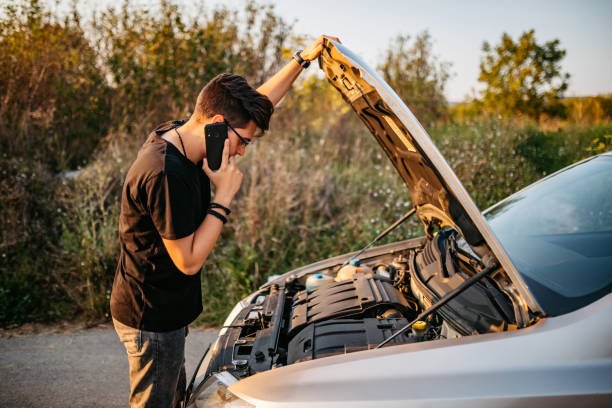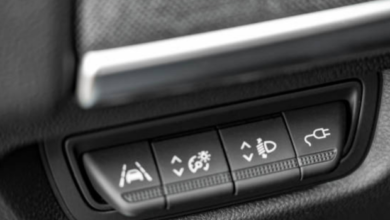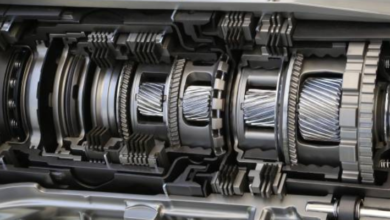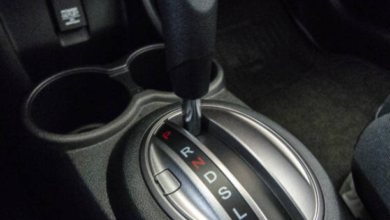Causes of a Hot Auto Transmission

Your vehicle’s automatic transmission is a complex and vital component, responsible for ensuring smooth gear shifts and efficient power transfer from the engine to the wheels. However, when your transmission overheats, it can lead to significant problems, potentially causing costly damage and even total transmission failure. Understanding the causes of a hot auto transmission can help you take preventive measures and keep your vehicle running smoothly.
1. Low Transmission Fluid
One of the most common causes of hot auto transmission is low transmission fluid. Transmission fluid is essential for lubricating the moving parts within the transmission and reducing friction. When the fluid level is low, these parts can rub against each other, generating excessive heat. Additionally, transmission fluid helps cool the transmission by carrying heat away from the internal components. Without enough fluid, the transmission can’t effectively dissipate heat, leading to overheating.
How It Happens:
- Leaks from worn-out seals or gaskets.
- Improper maintenance, such as failing to check and refill fluid levels regularly.
2. Old or Contaminated Transmission Fluid
Over time, transmission fluid can break down or become contaminated with dirt, metal particles, and other debris. When this happens, the fluid loses its ability to lubricate and cool the transmission effectively. Dirty or degraded fluid can also lead to increased friction and wear on the transmission’s internal components, contributing to overheating.
How It Happens:
- Extended periods between transmission fluid changes.
- Contamination from internal transmission wear or external debris.
3. Heavy Towing or Overloading
Towing heavy loads or overloading your vehicle places extra stress on the transmission. The transmission must work harder to manage the additional weight, which increases the temperature inside the transmission. This is particularly problematic if the vehicle isn’t equipped with a heavy-duty transmission or an auxiliary transmission cooler, both of which are designed to handle higher thermal loads.
How It Happens:
- Towing beyond the vehicle’s recommended capacity.
- Carrying excessive cargo weight for extended periods.
4. Stop-and-Go Traffic
Driving in stop-and-go traffic, especially in hot weather, can cause your transmission to overheat. Constantly shifting between gears and the lack of airflow to cool the transmission while idling can quickly raise the temperature inside the transmission. This is particularly challenging for vehicles without a robust cooling system or when the air conditioning system is also drawing power from the engine.
How It Happens:
- Urban driving with frequent stops and starts.
- Extended periods of idling in traffic.
5. Clogged or Malfunctioning Transmission Cooler
Many vehicles are equipped with a transmission cooler, a small radiator designed to cool the transmission fluid as it circulates through the system. If this cooler becomes clogged with debris or fails to function properly, the fluid won’t cool as it should, leading to a rise in transmission temperature. Over time, this can result in overheating, especially under demanding driving conditions.
How It Happens:
- Buildup of dirt, debris, or sludge in the cooler.
- Mechanical failure of the cooler or associated components.
6. Internal Transmission Problems
Issues within the transmission itself can also lead to overheating. For example, if the transmission is slipping, it means that the gears aren’t engaging properly, causing the engine to work harder and produce more heat. Other internal problems, such as worn-out gears, damaged clutches, or malfunctioning solenoids, can also increase the transmission’s workload and generate excessive heat.
How It Happens:
- Wear and tear from age and use.
- Manufacturing defects or improper repairs.
7. Driving in Extreme Conditions
Driving in extreme weather conditions, such as very hot climates or mountainous terrain, can cause your transmission to overheat. In hot climates, the ambient temperature is already high, which makes it harder for the transmission to cool down. Similarly, driving in mountainous areas puts extra strain on the transmission as it works harder to manage the vehicle’s speed on steep inclines and declines.
How It Happens:
- Prolonged exposure to high ambient temperatures.
- Continuous driving on steep hills or rough terrain.
Conclusion
A hot auto transmission is a clear sign that something is wrong, and addressing the issue promptly can save you from expensive repairs down the road. Whether it’s low fluid levels, heavy towing, or internal issues, understanding the causes of transmission overheating is the first step in preventing it. Regular maintenance, including checking and replacing transmission fluid, and being mindful of your vehicle’s limits, are key to keeping your transmission cool and your vehicle running smoothly. If you notice any symptoms of overheating, such as a burning smell or sluggish performance, it’s crucial to consult a professional mechanic immediately.




